By combining the powers of Facebook Insights and Google Analytics, you can determine some basic demographic and affinity data and use it to create a preliminary buyer persona.
While you’ll want to pull other sources of data (if available) to determine your buyer persona, Facebook and Google Analytics are great places to start.
Begin With Facebook Insights
If you’ve got a Facebook page set up, Facebook Insights offers an organized overview of your audience.
A few important notes about your Facebook Insights:
- This is only reflective of the audience you have on Facebook, not on other areas of social media. For example, my website has a fair amount of male viewers on Facebook, but not very many male viewers on tumblr or Pinterest.
- Not all of your fans get to see your content due to Facebook’s algorithm and their desire to encourage you to buy paid advertising.
Access the People Tab on Insights
Head to your page and log into Business Manager (if you utilize it to manage your page). Click on the insights tab at the top of the page.
You’ll see your dashboard there – key metrics and recent post performance at a glance.
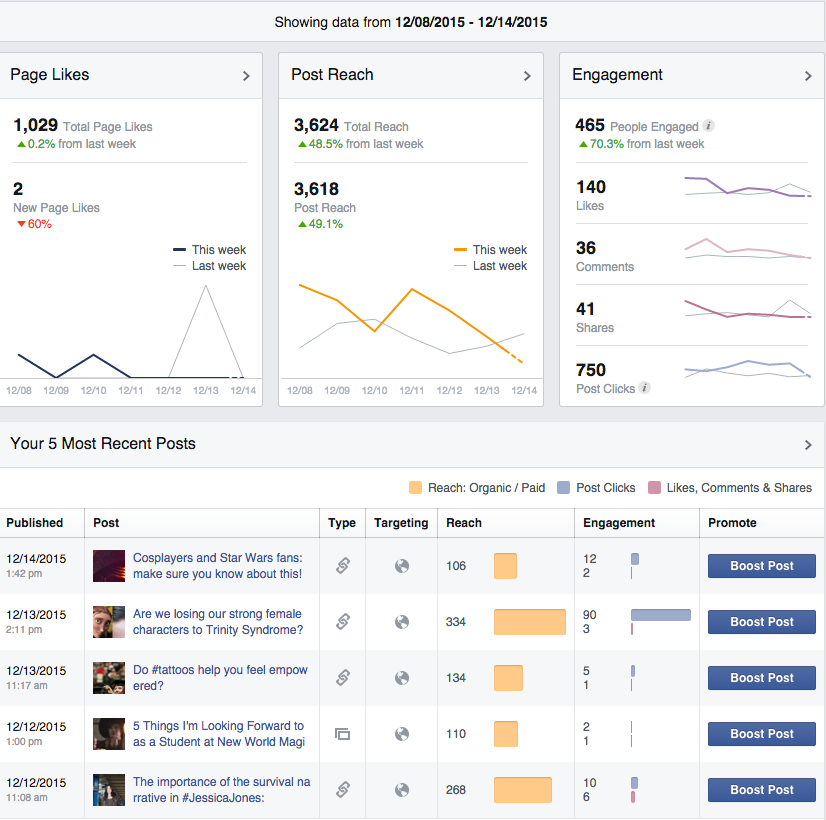
Use the People Menu in Facebook Insights
In the menu on the left side, click “People.” You get three important categories:
- Your Fans (who ‘liked’ your page)
- People Reached (who saw your shared posts via your page or shares from your page)
- People Engaged (who liked, commented, or shared your posts)
The report will default to Your Fans. This report reveals the following demographics:
- Age
- Gender
- Country
- City
- Language
To provide some context: the screen shots are insights for a Facebook page representing The Geek Initiative, my website about women in geek culture.
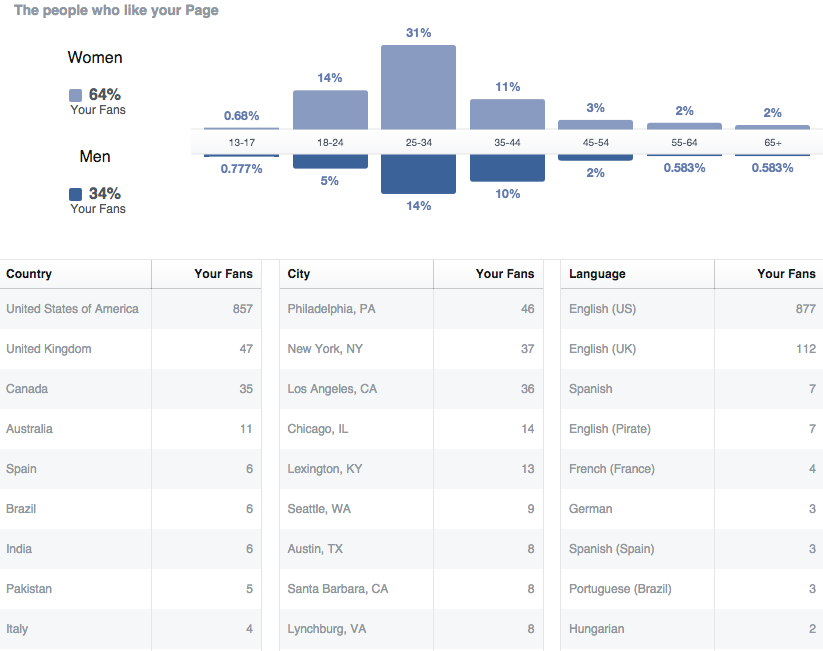
Using this information, I can begin to piece together a persona for my website’s viewership. This reflects who has actually liked my page on Facebook.
Start Building Your Persona: Find Lucy
She’s most likely a woman between 25 and 34 who speaks English. She may live in the Northeastern United States. Let’s name her Lucy.
However, looking at the People Reached tab can change the demographic when it comes to viewership:
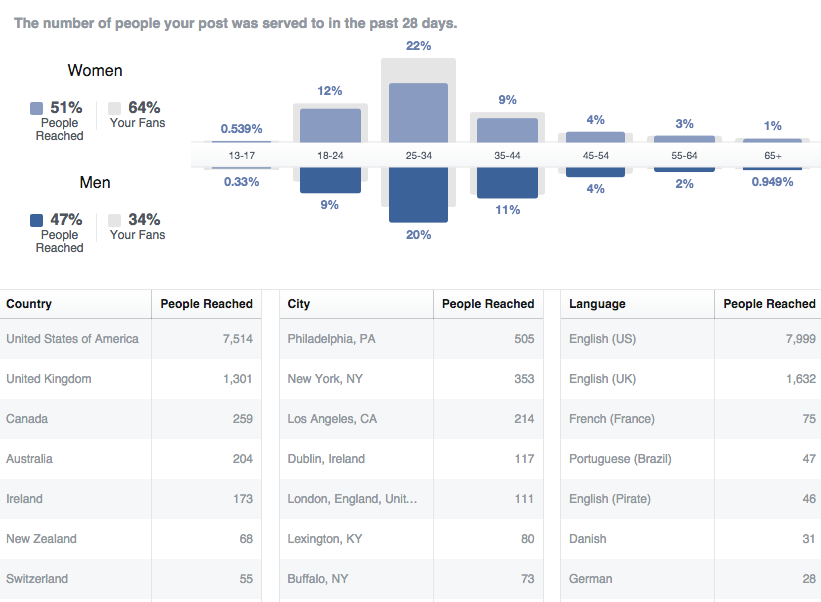
Looking at the people reached, I see that my content was served to many men as well. Since I’m not running any ads and can also look at my shares/engagement, the data suggests that women are sharing my content and men are seeing it via those shares. We’re still in the 25 – 34 age range primarily, and overall we’re looking at 18 – 44
A Secondary Preliminary Persona Emerges: Lucy’s Pal George
Looking at this information, I’m starting to think about George, who might be Lucy’s friend or husband. George represents the man who is seeing this content.
Let’s move on to the People Engaged report. This shows which of my fans and readers are most engaged.
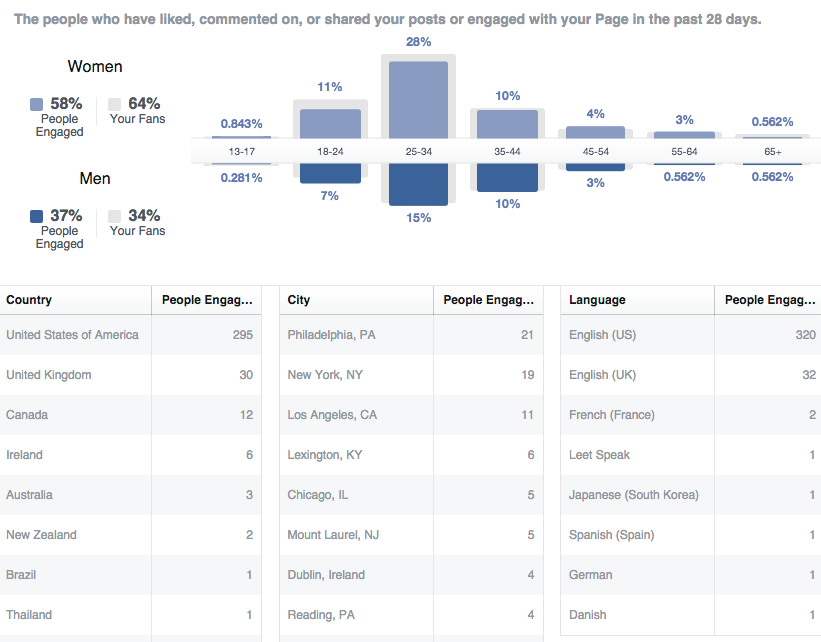
Although George might see my content, it looks like Lucy’s still the one responding to it the most. It’s probably the most relevant and meaningful to Lucy.
Although we’ve explored the tabs under “people,” we aren’t quite finished. We want to know more about Lucy so we can post content she’ll enjoy.
Use the Posts Menu in Facebook Insights
Under Posts (on our menu), we can find more info about Lucy. Lucy and I share a lot of the same characteristics. Is she a night owl like me? Let’s find out!
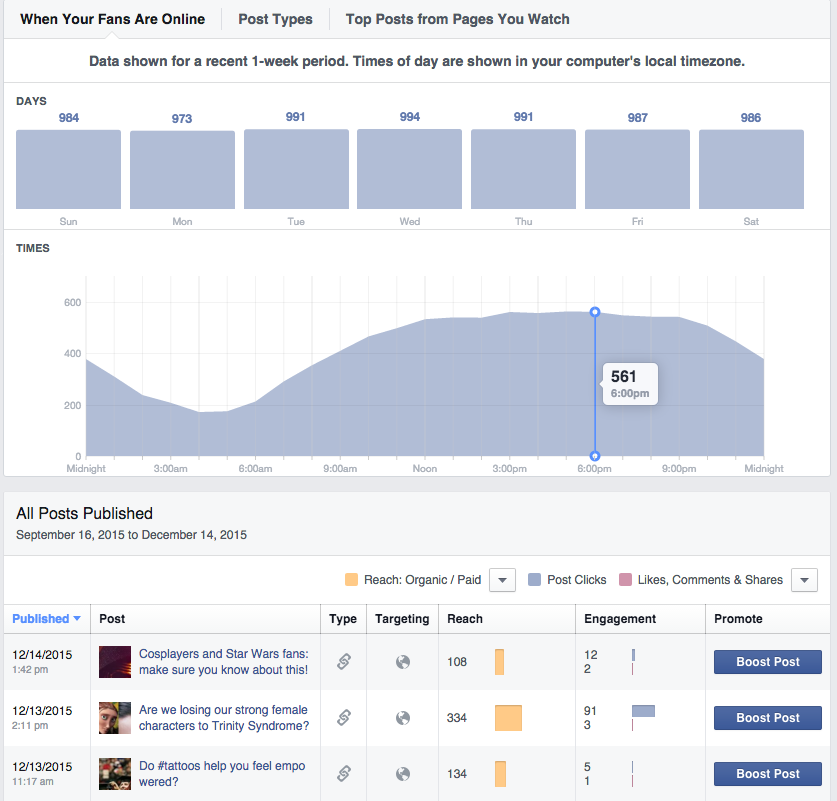
Facebook provides information in your computer’s local time. From the location, I’ve determined that Lucy lives in my time zone. It looks like she’s online between noon and 9 p.m. – an evening Facebook user.
Continue With Google Analytics
As I mentioned earlier, Facebook Insights don’t give you the entire picture – it can only reveal information about who likes and interacts with you on their site.
So before we’re set on marketing everything to Lucy and her pal George, let’s take a look at what Google Analytics has to say.
In Google Analytics under Audience > Overview on the left hand menu, I can find some basic demographic information about my website viewers:
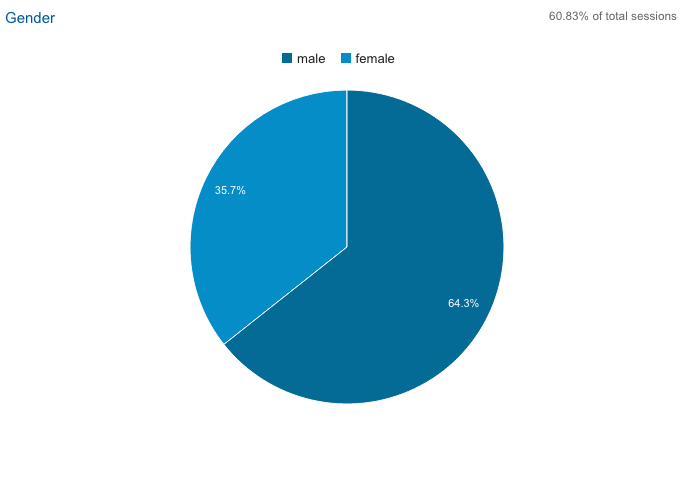
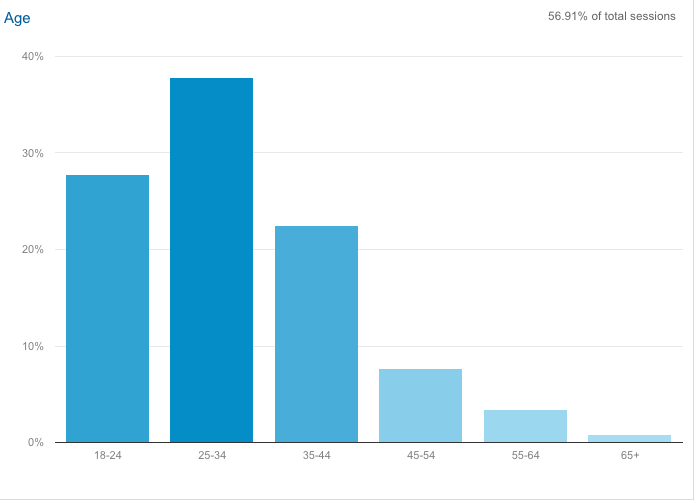
In my website’s case, the gender divide matches Facebook Insight’s reported demographic closely. Much of my site’s traffic comes from Facebook, so this isn’t a surprise – but the same may not be true for you based on how people find your site.
Additionally, popular posts alter this information from time to time depending on where the posts are shared. For best results, check in consistently to get a good idea of your persona over time.
The 18 – 24 demographic is a bit higher on Google than on Facebook. This likely reflects traffic from tumblr and other sites frequented by younger users.
Google Analytics also reveals that a particularly popular post resonated especially well with our primary age demographic. That’s especially helpful, because I want to post content that serves my audience.

Facebook Insights echoes this. And here’s something else: the post’s author is similar to Lucy in terms of demographics. The post, which tackles the topic of race in geek culture, was also:
- Controversial
- Noncommittal, introducing controversy but not revealing the author’s opinion
- Zeitgeist-centric
I’ll consider that in the future when it’s time to post something.
But what about the gender of those who viewed that post?
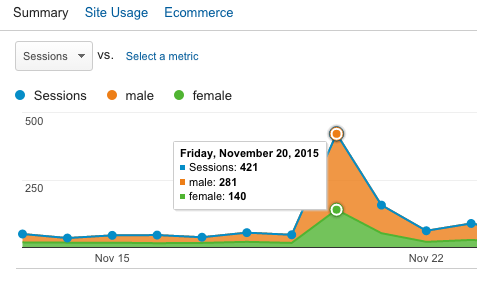
Looks like George might have been even more interested in this post than Lucy.
Similarly, you can look at language and location under the “Geo” menu in the left hand side of analytics. In my site’s case, those echoed Facebook Insights’ metrics almost exactly.
Right now, I’m still interested in learning more about Lucy and George.
Let’s take a look at the Interests > Overview area of Analytics.
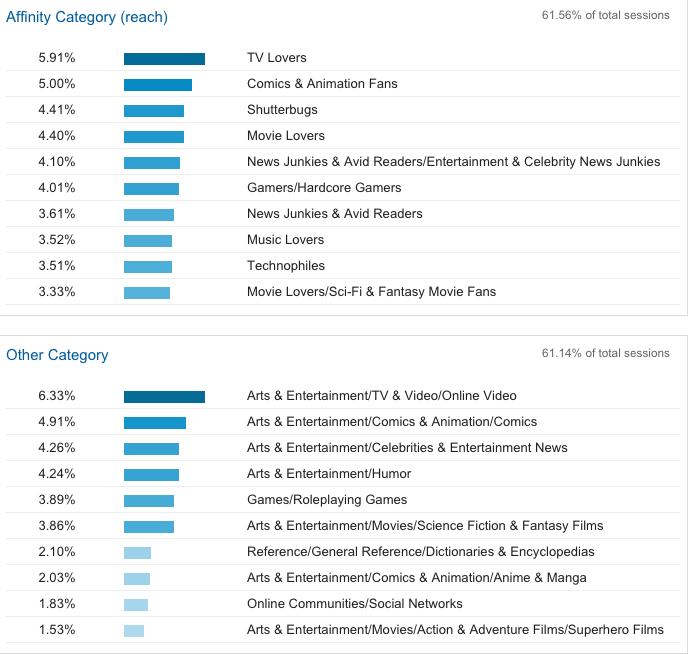
That’s pretty expected for a website about geeky stuff.
Who Are Lucy and George?
Primary Persona:
Name: Lucy
Gender: Female
Engagement: Potentially likes Facebook page and comments/shares; returns to website.
Secondary Persona:
Name: George
Gender: Male
Engagement: May click on site’s link if he sees it on his Facebook feed; doesn’t actively return to website.
Both Lucy and George:
Age: 30
Location: Northeastern United States
Language: English
Online: 6 – 9 p.m. ET
Enjoy: TV, Movies, Fantasy, Superheroes
Conclusions
Someone like Lucy is most likely to sign up to email lists and remain an engaged member of The Geek Initiative’s community.
That said, her buddy George will occasionally visit my site, but doesn’t feel the same sort of investment in it as Lucy. George is less likely to buy whatever I’m selling, though he does have a casual interest.
This helps me make decisions about content and whatever merchandise I may wish to sell in the future. Those who are more invested in the community are likely to buy, but I don’t want to eschew my secondary demographic. At first glance, controversial content, when posted in the right way/with the right title, may bring George to my site without driving Lucy away.
What have you learned about buyer personas through Facebook Insights and Google Analytics? Let me know in the comments!












Comments (1)
 height insoles
height insoles
great read, as usual